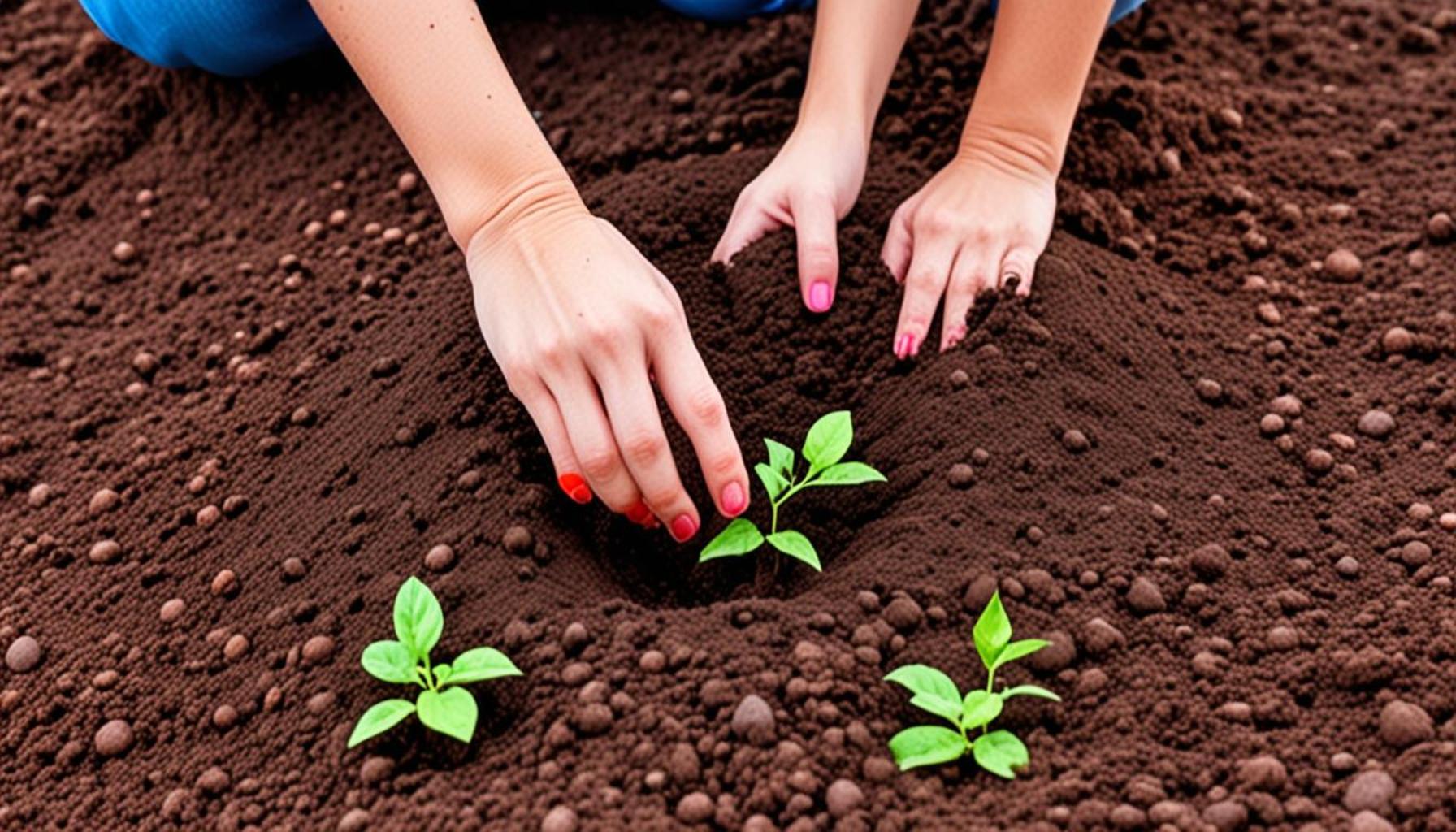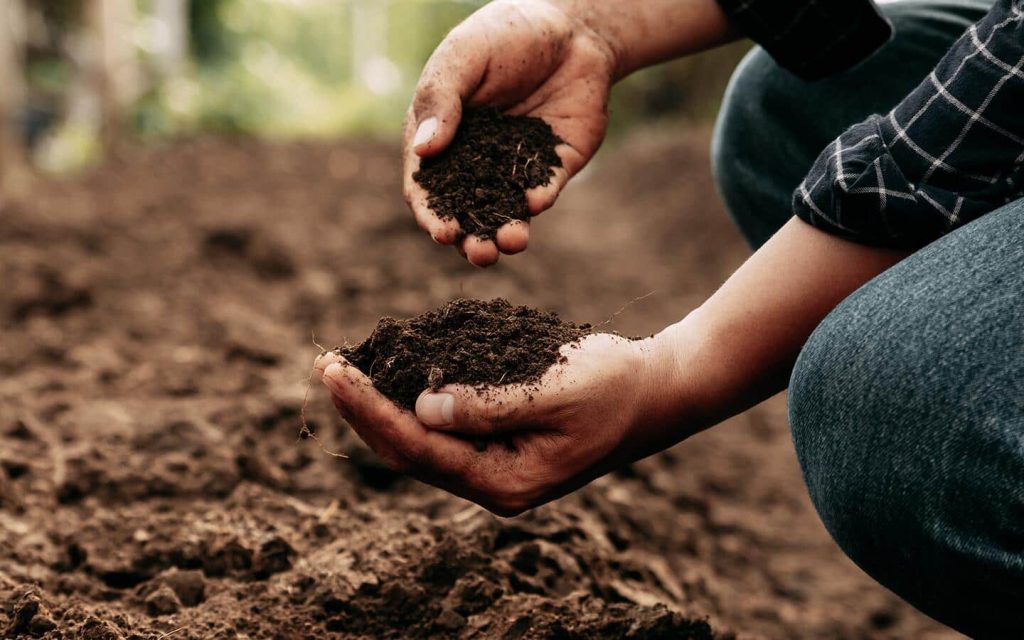How to Test and Improve Soil Quality Before Planting: A Beginner’s Guide

The Importance of Soil in Agriculture and Gardening
Soil quality is a foundational element that significantly influences the success of gardening or farming endeavors. Whether you are nurturing a home garden or managing a sizable agricultural operation, understanding the intricacies of your soil can mean the difference between a flourishing ecosystem and a lackluster yield. By investing time in thoroughly testing and improving your soil, you not only ensure healthier plants but also increase the productivity of your garden or crop fields.
Before you set out to plant, it is essential to consider several key aspects of soil quality:
- Soil composition: The makeup of your soil, particularly the ratio of sand, silt, and clay, directly influences its drainage capabilities and nutrient retention. For example, sandy soils drain quickly and may require more frequent watering, while clay-heavy soils retain moisture but can become compacted. A balanced mix often leads to optimal growing conditions.
- pH levels: The acidity or alkalinity of your soil, measured by pH levels, profoundly affects nutrient availability. Most plants thrive in a pH range of 6.0 to 7.0. For instance, blueberries prefer slightly more acidic conditions, while asparagus flourishes in more alkaline soils. Testing your soil’s pH can guide your choices in plant selection and amendments.
- Nutrient content: Knowing the levels of essential nutrients such as nitrogen, phosphorus, and potassium is vital for maintaining plant health. These nutrients play distinct roles; nitrogen promotes vigorous leaf growth, phosphorus supports root development, and potassium contributes to overall plant vitality. Conducting a soil test reveals nutrient deficiencies, allowing for targeted fertilization.
Testing your soil is simpler than it may appear. Numerous soil testing kits are available at local garden centers, while many extension services—often affiliated with universities—provide soil testing for a nominal fee. Once you’re equipped with information about your soil’s current condition, you can implement various strategies to enhance its quality.
Improving soil health includes practices such as adding organic matter, like compost or well-rotted manure, to enrich nutrient content and improve structure. Crop rotation and cover cropping are additional techniques that can prevent nutrient depletion, enhance soil biodiversity, and suppress pests.
Join us as we delve into effective methods to test soil quality and innovative strategies to improve it. Equip yourself for a successful planting season, where you can witness the rewards of a robust and thriving garden or farm.

DISCOVER MORE: Click here to find out the best time to harvest your vegetables
Understanding Soil Testing: A Step-by-Step Approach
Soil testing is an integral part of preparing your garden or farm for planting. By assessing various soil characteristics, you can tailor your amendments to meet the specific needs of your plants. The good news is that testing your soil is a straightforward process, even for beginners. Here’s how you can get started:
1. Gather Your Supplies
Before you begin testing your soil, make sure you have the necessary tools. You will need:
- A clean container for collecting soil samples.
- A soil test kit, which can be purchased at garden centers or home improvement stores.
- A trowel or shovel for digging.
- Notebook to record your findings.
2. Collect Soil Samples
Next, it’s time to gather soil samples from your garden or farm. For accurate results, it’s important to collect samples from multiple locations. Follow these steps to ensure a representative sample:
- Choose sampling spots based on the size and type of your planting area. Aim for 5 to 10 locations to represent the entire area.
- Remove the top layer of grass or mulch, which can skew your results.
- Using a trowel, extract about 6–8 inches of soil from the ground at each location. This depth provides a good indication of the growing conditions.
- Combine the samples in your container to create a composite sample, mixing thoroughly.
3. Test for pH Levels
The pH level of your soil is one of the most critical aspects to consider. It impacts not only nutrient availability but also the health of beneficial microorganisms in the soil. Using your soil testing kit, follow the manufacturer’s instructions to measure pH levels. Typically, this involves mixing a small amount of soil with distilled water and a testing solution. You should aim for a pH range between 6.0 and 7.0 for most plants.
If your results indicate that your soil is too acidic or alkaline, there are amendments available to rectify this. For example, adding lime can raise pH levels, while sulfur can help lower them.
4. Assess Nutrient Content
Alongside pH testing, determining the levels of key nutrients—specifically nitrogen (N), phosphorus (P), and potassium (K)—is vital. Many soil testing kits can evaluate these nutrients and provide recommendations for fertilizers or organic amendments. Nitrogen, essential for foliage growth, phosphorus supports root development, and potassium strengthens plant resilience.
5. Interpret and Analyze Your Results
Once you have your results, you’ll need to analyze what they mean for your planting plans. If a nutrient is deficient, research ways to amend your soil. For example:
- Low nitrogen? Consider adding compost or a nitrogen-rich fertilizer.
- Low phosphorus? Bone meal or rock phosphate can be effective amendments.
- Low potassium? Potash or wood ash may help boost levels.
As you gain insights from your testing, you’ll be in a better position to improve your soil quality. By taking these essential steps, you set the foundation for a thriving garden or productive farm. Remember, the better your soil, the better your plants will grow. Ready to learn more about how to improve soil quality? Let’s dive into some specific enhancement techniques!
Soil Testing Methods
Understanding how to assess soil health is the first step for any aspiring gardener or farmer. Soil testing is essential to identify nutrient levels, pH balance, and potential contaminants. There are several methods available to test soil quality effectively:
- DIY Soil Testing Kits: Available at garden centers, these kits often come with straightforward instructions. They provide essential information on pH, nitrogen, phosphorus, and potassium levels.
- Laboratory Testing: For a more detailed analysis, consider sending soil samples to a professional laboratory. They can test for microbial content, heavy metals, and other parameters.
- Visual Inspection: Sometimes the best insights come from observation. Check for signs of erosion, compaction, or poor drainage; these can indicate underlying soil issues.
Improving Soil Quality
Once you’ve tested your soil and identified its deficiencies, the next step is taking action to enhance its quality. Amending your soil can create a more fertile environment for your plants. Here are some effective strategies:
- Add Organic Matter: Incorporate compost, aged manure, or leaf mold to improve soil structure, enhance nutrient retention, and boost microbial activity.
- Utilize Cover Crops: Planting cover crops can prevent soil erosion, enhance soil structure, and increase nitrogen levels when tilled back into the soil.
- Adjust pH Levels: Based on your soil test results, you can add lime to raise pH or sulfur to decrease it, optimizing conditions for various plants.
- Mulching: Using organic mulch helps retain moisture, regulate temperature, and add nutrients as it decomposes.
Understanding soil testing techniques and learning how to improve soil quality will set the foundation for abundant plant growth. Cultivating healthy soil is not just a one-off process; it requires consistent monitoring and adjustments, ensuring plants thrive in their growing stages.
| Soil Testing Category | Advantages |
|---|---|
| DIY Soil Testing Kits | Cost-effective and easy to use, suitable for quick assessments. |
| Laboratory Testing | Provides comprehensive analysis, identifying specific nutrient deficiencies. |
DISCOVER MORE: Click here to learn about the best plants for beginners
Enhancing Soil Quality: Techniques for Improvement
Once you’ve tested your soil and identified its specific needs, the next logical step is to implement strategies to enhance its quality. Improving soil is not just about adding nutrients; it’s about creating a thriving ecosystem that supports plants. Here are some effective techniques that beginners can use to bolster their soil’s structure and fertility:
1. Incorporate Organic Matter
The introduction of organic matter is one of the most crucial improvements you can make to your soil. Organic materials such as compost, well-rotted manure, and leaf mold can boost nutrient content, improve soil structure, and enhance moisture retention. When you mix these materials into your soil, they provide a buffet of essential nutrients and encourage the growth of beneficial microorganisms.
To implement this technique, layer about 2-4 inches of organic matter over your soil and then till or mix it in thoroughly. This will not only enhance fertility but also promote a healthy soil ecosystem.
2. Utilize Cover Crops
Cover crops, such as clover, vetch, or rye, are an excellent way to improve soil quality naturally. These crops, when grown during off-seasons, add organic matter, suppress weeds, and help prevent soil erosion. Furthermore, certain cover crops, like legumes, can fix atmospheric nitrogen, making more of this nutrients available for subsequent crops.
After they mature, cover crops can be turned back into the soil, enriching it with their biomass, thereby establishing a nutrient-rich foundation for your next planting.
3. Apply Mulch
Using mulch is another effective technique that not only conserves soil moisture but also supports soil health. Organic mulches such as wood chips, straw, or grass clippings decompose over time, enriching the soil. Beyond that, mulch acts as a barrier against weed growth, helping to keep the soil’s ecosystem in balance.
To apply mulch, spread a layer that is about 2-3 inches thick around your plants, but be careful to keep it a few inches away from the plant stems to prevent rot.
4. Enhance Drainage
Proper drainage is essential for healthy root systems. If your soil consistently retains too much water, consider implementing strategies such as raised beds, which improve drainage, or adding sand or gypsum to heavy clay soils to enhance aeration and water movement.
To assess drainage, conduct a simple test by digging a hole, filling it with water, and monitoring how fast it drains. Ideally, the water should drain within a few hours. If it takes more than 24 hours, that indicates the need for corrective actions.
5. Monitor Soil Health Over Time
Enhancing soil quality is an ongoing process. Regular testing and monitoring allow you to understand how your amendments affect soil health over time. Consider retesting your soil every few years to note changes and ensure that your approach remains effective.
By keeping records of your modifications, you can develop a successful soil management strategy that aligns with your crops’ growth cycle, ensuring their continuous success.
With these practical techniques at your disposal, you’re well on your way to improving your soil quality significantly. By understanding and enhancing the soil’s characteristics, you create an environment where plants can thrive, leading to a rewarding gardening or farming experience. Ready to dig deeper into specific amendments or unique plant pairings? Let’s explore the next steps together!
DISCOVER MORE: Click here to learn how beneficial insects can enhance your pest control methods
Conclusion
Understanding how to test and improve soil quality is an essential skill for anyone looking to cultivate a successful garden or farm. By following the steps outlined in this guide, beginners can establish a solid foundation for their planting endeavors. Testing your soil gives invaluable insights into its composition, nutrient availability, and overall health, creating a roadmap for necessary improvements.
Implementing practices such as incorporating organic matter, utilizing cover crops, and applying mulch not only enhances nutrient levels but also fosters a vibrant soil ecosystem. Remember, good soil isn’t just about chemical balances; it’s about encouraging biodiversity, enhancing structure, and retaining moisture. The journey to great soil is ongoing; continuously monitoring its health through regular testing ensures that your gardening practices adapt to changing conditions.
As you embark on this exciting venture, keep in mind that healthy soil leads to healthy plants, which in turn equate to fruitful harvests and flourishing gardens. Engaging with the soil also connects you to nature, instilling a deeper appreciation for the earth’s cycles and systems. So grab your shovel and get started! The secret to thriving plants lies below your feet, waiting for you to discover its potential. Are you ready to transform your soil and elevate your gardening game?



